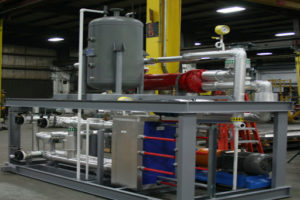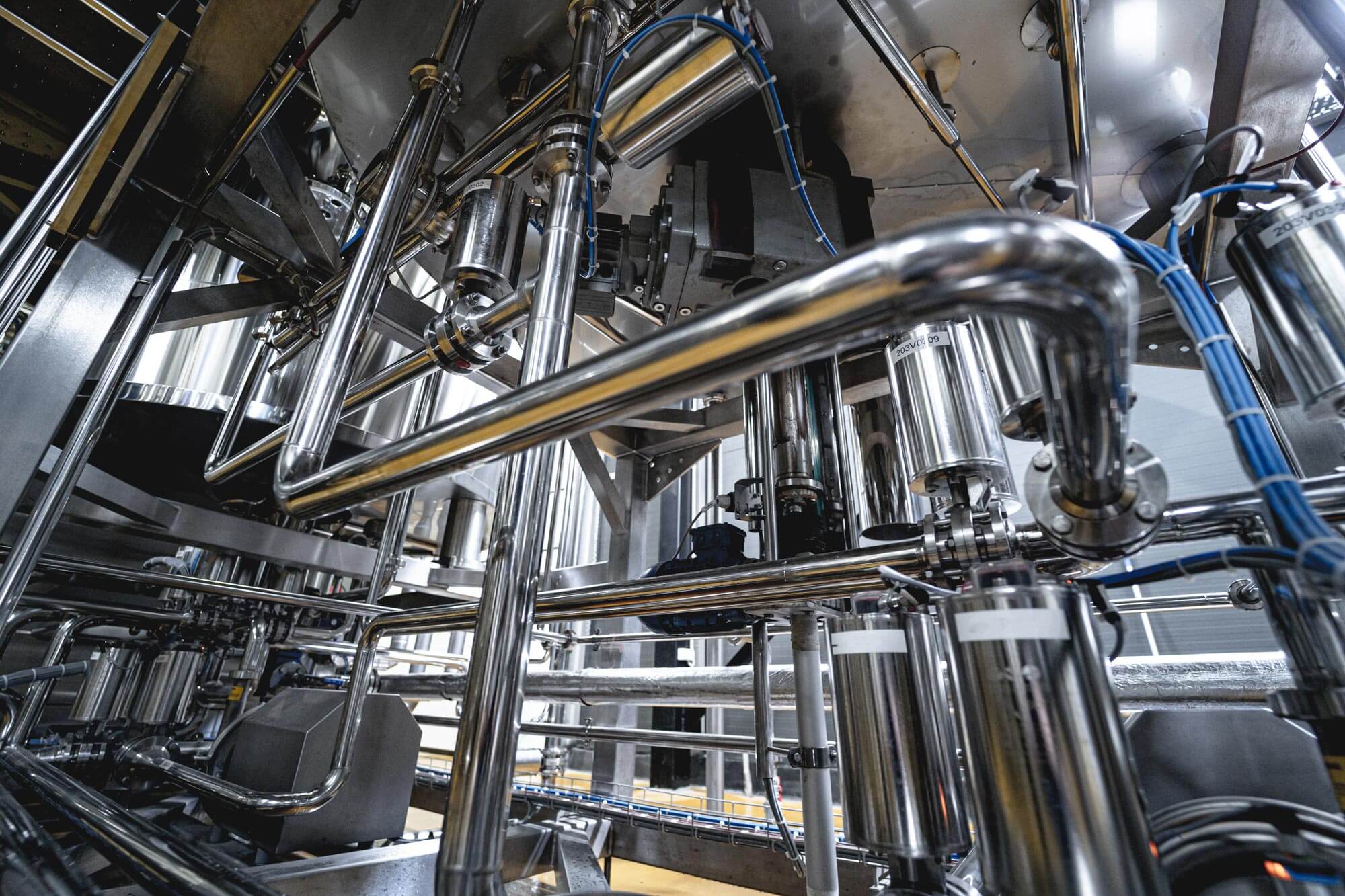DVS Heat Transfer Systems: The Future of Energy-Efficient Industrial Heating Solutions
Exploring the Benefits and Applications of Heat Transfer Solutions in Modern Market
Heat transfer systems play a crucial role in modern-day industry. They encompass numerous mechanisms such as convection, radiation, and conduction, each adding to efficient thermal monitoring. Industries like production and aerospace advantage substantially from these systems. As advancements proceed, the integration of innovative products and innovations guarantees to enhance power performance. This advancement elevates crucial questions concerning the future ramifications for sustainability and operational prices across numerous industries. What lies in advance in this recurring improvement?
Comprehending Heat Transfer Concepts
Heat transfer concepts are fundamental to the procedure of various commercial systems. These principles incorporate the systems of radiation, transmission, and convection, each playing an important role in handling thermal power. Understanding transmission entails evaluating how Heat relocates via strong materials, while convection pertains to Heat transfer in liquids, driven by liquid motion. Radiation, distinctive from the other two, entails energy transfer with electromagnetic waves. The performance of Heat transfer effects system efficiency, energy usage, and general efficiency. Reliable thermal monitoring is essential in procedures such as Heat, heating, and cooling recovery. By grasping these principles, markets can maximize their operations, minimize power prices, and enhance equipment durability, therefore adding to a more sustainable and effective industrial landscape.
Key Kinds Of Heat Transfer Systems
While numerous sectors utilize Heat transfer systems for varied applications, several essential types stick out due to their specific functions and effectiveness. The most common kinds consist of conduction, convection, and radiation systems. Conduction systems transfer Heat through direct contact between products, making them reliable in solid-state applications. Convection systems, on the various other hand, use liquid movement to move Heat, suitable for home heating or cooling fluids and gases. Radiation systems run without a tool, relying on electromagnetic waves to move Heat, perfect for high-temperature settings. Each kind serves distinct purposes, permitting sectors to customize their Heat transfer services based on operational requirements, power effectiveness, and cost-effectiveness. Comprehending these systems is crucial for maximizing performance in various commercial settings.
Industrial Applications of Heat Transfer Technologies
The application of Heat transfer technologies in industry plays an important duty in boosting energy performance and enhancing processes. DVS Heat Transfer Systems. By implementing innovative Heat exchange systems, firms can greatly lower their ecological impact while boosting general productivity. This assimilation not just fosters sustainability yet likewise aligns with modern-day regulatory and customer demands for greener techniques
Power Efficiency Improvements
As sectors progressively prioritize sustainability, power efficiency enhancements in Heat transfer innovations have actually come to be necessary for decreasing functional expenses and ecological impact. Improved Heat exchangers, for instance, utilize innovative products and styles to make the most of thermal efficiency while decreasing power consumption. Additionally, incorporating variable speed drives in pumping systems enables better control of fluid flow, causing significant energy cost savings. The execution of smart sensors and automation supplies real-time surveillance, enabling adjustments that enhance energy usage. In addition, waste Heat recovery systems capture excess thermal energy, transforming it right into useful power. These advancements not only improve power efficiency yet likewise add to a much more sustainable commercial landscape by decreasing greenhouse gas emissions and supporting compliance with environmental guidelines.
Refine Optimization Techniques
Process optimization techniques are essential in boosting the performance and efficiency of Heat transfer innovations in industrial applications. These techniques involve refining processes to optimize Heat transfer performance while decreasing power intake and functional expenses. Methods such as computational fluid characteristics (CFD) modeling enable engineers to assess and imitate Heat transfer situations, determining areas for improvement. Additionally, real-time monitoring systems can offer beneficial data on temperature gradients and flow prices, allowing modifications that optimize performance. In addition, applying sophisticated control techniques, such as predictive analytics, can boost system responsiveness to varying functional demands. By applying these optimization methods, industries can accomplish greater thermal effectiveness, reduced downtime, and boosted product high quality, ultimately bring about enhanced competition in the market.

Ecological Impact Decrease
While industrial Heat transfer technologies are necessary for functional performance, their application likewise provides possibilities for substantial ecological influence decrease. By boosting energy performance, these systems minimize gas intake, causing reduced greenhouse gas emissions. For example, advanced Heat exchangers can recuperate waste Heat, redirecting it to preheat inbound fluids, therefore decreasing power needs. Additionally, the assimilation of Heat transfer innovations in renewable resource systems, such as solar thermal and geothermal applications, sustains the shift to sustainable methods. Industries that utilize these innovations additionally take advantage of reduced functional prices and improved governing conformity. On the whole, the tactical application of Heat transfer systems not just boosts performance yet additionally cultivates an extra lasting commercial landscape, adding to international ecological objectives.
Benefits of Reliable Heat Transfer Solutions
Effective Heat transfer systems provide considerable benefits in contemporary market, mainly with enhanced energy performance and price decrease. By enhancing thermal administration, these systems reduce energy waste, leading to reduced functional prices (DVS Heat Transfer Systems). Organizations can accomplish greater sustainability and improved profitability.

Power Performance Improvements
As industries progressively focus on sustainability and cost-effectiveness, power efficiency enhancements in Heat transfer systems have actually arised as a vital focus. Boosted performance in these systems brings about minimized power intake, making it possible for centers to run even more sustainably. By maximizing Heat transfer approaches, industries can reduce waste Heat and attain better thermal management, significantly lowering their environmental effect. Advancements in modern technologies such as Heat exchangers and insulation materials add to enhanced performance and reliability. Additionally, carrying Home Page out energy-efficient Heat transfer solutions not only sustains conformity with regulatory requirements however also cultivates a society of advancement within companies. Eventually, these renovations are essential in straightening commercial operations with global power conservation objectives, leading the way for an extra lasting future in manufacturing and handling markets.
Cost Decrease Opportunities
By optimizing Heat transfer systems, markets can reveal substantial price reduction possibilities explanation that improve their profits. Effective Heat transfer lowers energy consumption, resulting in lower utility expenses and reducing functional expenses. In addition, enhanced system efficiency decreases the requirement for maintenance and fixings, additionally conserving costs gradually. Boosted Heat transfer can additionally extend devices lifespan, enabling firms to postpone capital investment on substitutes. Waste Heat recovery systems can transform excess Heat right into usable energy, better driving down costs. These systems not only improve procedures yet also add to sustainability campaigns, placing firms favorably in a progressively eco-conscious market. Overall, the financial benefits of effective Heat transfer systems are vital and considerable for competitive benefit.
Technologies in Heat Transfer Solutions
Just how can modern-day industry enhance its operations through ingenious Heat transfer solutions? By adopting advanced materials and innovations, markets can greatly improve thermal efficiency and performance. Advancements such as nanofluids, which improve Heat transfer abilities beyond traditional fluids, and phase change materials that save and launch thermal power, are getting traction. Furthermore, the combination of smart sensors and IoT tools permits for real-time surveillance and optimization of Heat transfer processes, decreasing waste and enhancing system responsiveness. Furthermore, additive manufacturing techniques make it possible for the development of more complicated Heat exchangers that take full advantage of area while reducing material use. Jointly, these developments drive functional effectiveness and create affordable advantages in various markets, including aerospace, power, and manufacturing.
The Duty of Heat Transfer in Sustainability Initiatives
While the press for sustainability remains to improve markets, the role of Heat transfer innovations becomes progressively crucial in accomplishing ecological goals. Reliable Heat transfer systems assist in energy effectiveness by maximizing thermal administration in numerous processes, significantly decreasing power consumption and greenhouse gas discharges. For circumstances, advanced Heat exchangers are made use of in industrial applications to recover waste Heat, thereby lessening power waste. In addition, developments such as phase change materials boost thermal storage space, contributing to renewable power assimilation. The learn this here now fostering of lasting liquids in Heat transfer systems can minimize environmental effect. By focusing on effective Heat transfer, industries not just improve operational performance however also align with worldwide sustainability efforts, cultivating a cleaner, extra lasting future.
Regularly Asked Inquiries
Exactly How Do Heat Transfer Solutions Effect Energy Prices in Manufacturing?
Heat transfer systems substantially affect power prices in production by boosting effectiveness, lowering waste, and maximizing thermal monitoring. These renovations bring about decrease operational expenses, ultimately benefiting overall productivity and success in industrial procedures.
What Upkeep Is Needed for Heat Transfer Systems?
Upkeep for Heat transfer systems consists of routine evaluations, cleaning of components, examining liquid levels and conditions, changing worn parts, and making certain correct insulation. These activities improve effectiveness, prolong lifespan, and prevent costly failures in procedure.
Are There Safety Concerns With Heat Transfer Systems?
Security issues with Heat transfer systems include prospective leakages, pressure build-up, and thermal dangers. Proper style, normal maintenance, and adherence to safety and security protocols are necessary to mitigate these dangers and guarantee safe procedure in industrial settings.
How Can I Select the Right Heat Transfer System for My Business?
Picking the best Heat transfer system entails evaluating elements such as performance, application requirements, budget plan restrictions, and safety and security standards. A complete evaluation of these elements will assist ensure ideal efficiency and reliability in organization procedures.
What Are Usual Failures in Heat Transfer Systems and Their Causes?

Comprehending conduction includes assessing exactly how Heat relocates with solid products, while convection pertains to Heat transfer in liquids, driven by fluid movement. By enhancing Heat transfer techniques, sectors can decrease waste Heat and attain better thermal administration, considerably lowering their environmental effect. Waste Heat recuperation systems can transform excess Heat into functional power, further driving down costs. Advanced Heat exchangers are utilized in industrial applications to recover waste Heat, therefore decreasing power waste. Common failures in Heat transfer systems include leaks, rust, and ineffective Heat exchange.